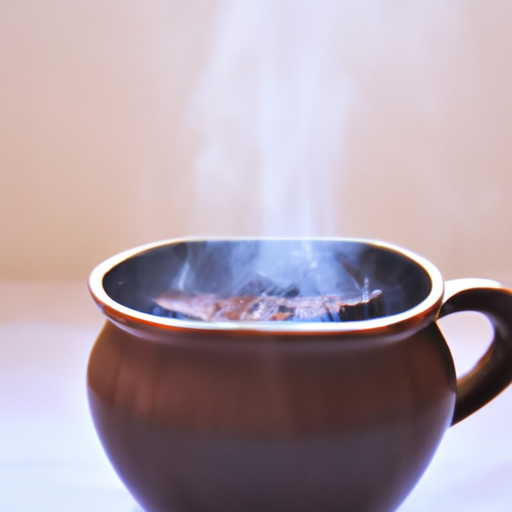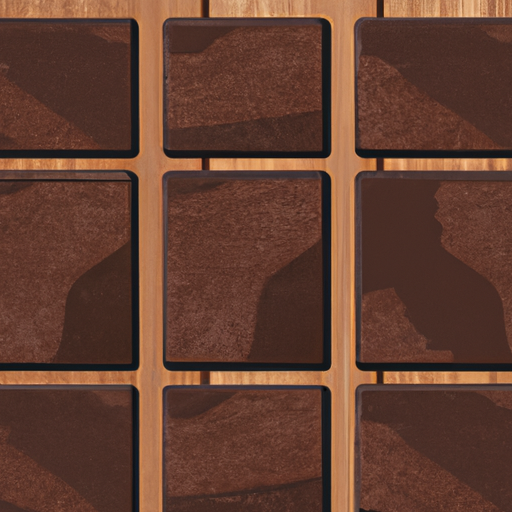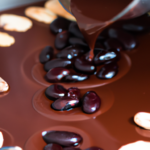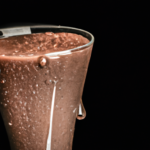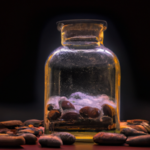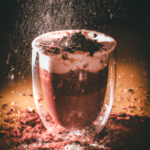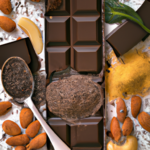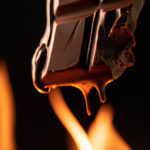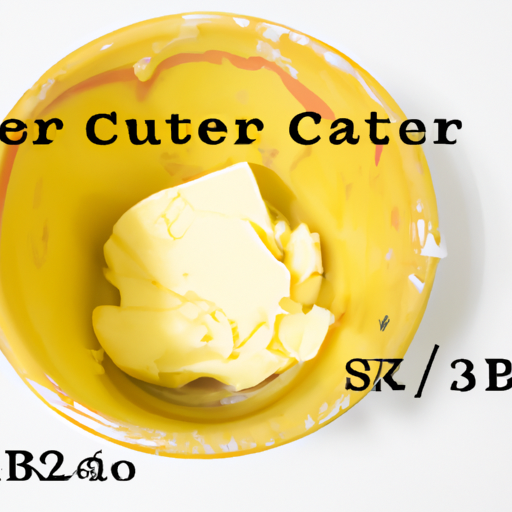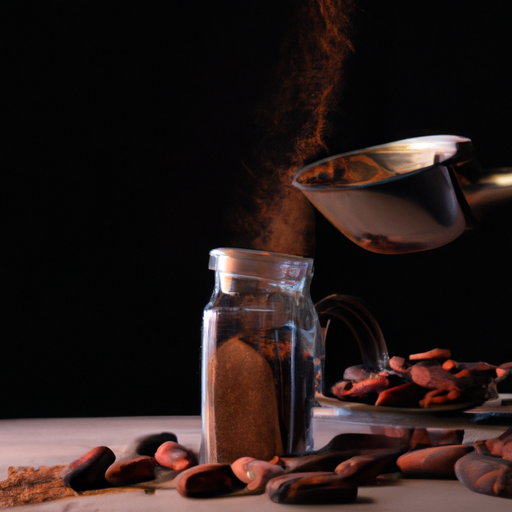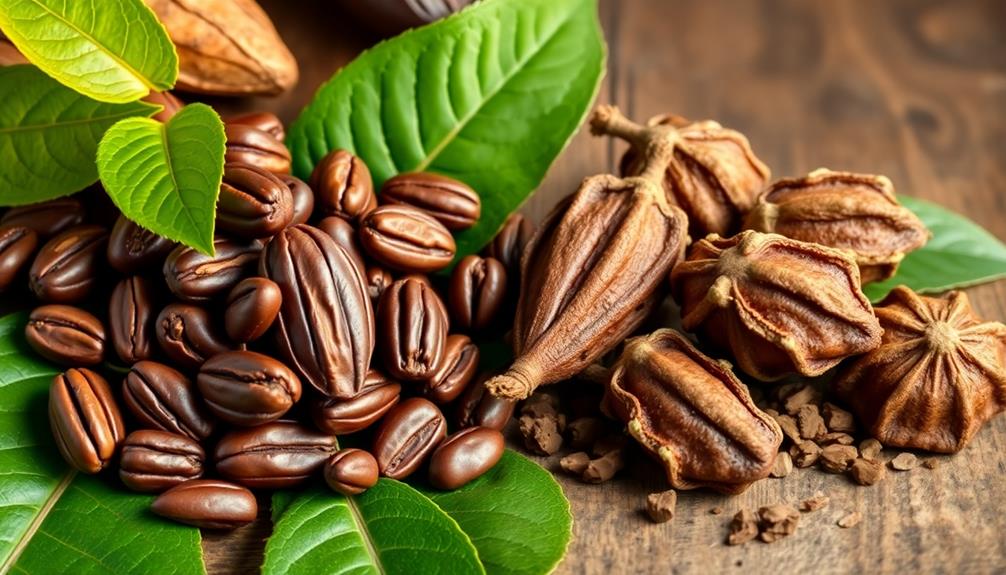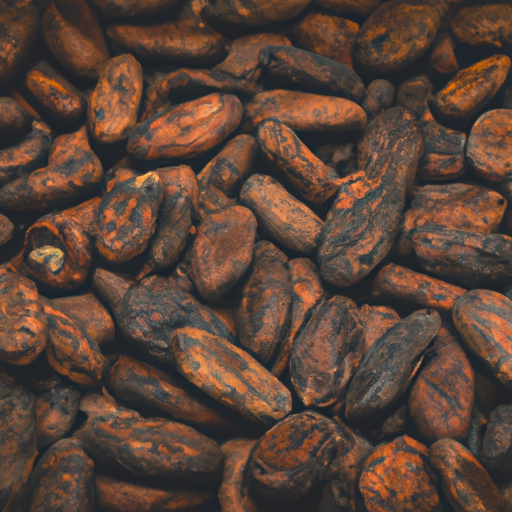Have you ever thought about how to savor a cup of hot raw cacao without losing out on its amazing health benefits? Well, ponder no more! In this article, I will walk you through the ways to enjoy this tasty elixir while getting the most out of its nutritional value.
Raw cacao is a true superfood, packed with antioxidants, minerals, and mood-boosting compounds. But did you know that the way you prepare it can affect its potency? By following a few simple steps, you can ensure that every sip of your hot raw cacao is a powerhouse of goodness.
From choosing high-quality raw cacao products to experimenting with different temperature levels, I’ll share evidence-based tips to help you retain the maximum benefits. We’ll also explore the art of adding healthy and flavorful ingredients, while avoiding overheating or boiling the cacao. And for an extra nutritional boost, we’ll incorporate some superfoods into the mix.
So, get ready to indulge in the ritual of drinking hot raw cacao and experience its full potential. Let’s dive in!
Key Takeaways
- Consume hot raw cacao earlier in the day to avoid sleep disturbances
- Adjust consumption of cacao based on individual responses to maximize benefits and avoid side effects
- Mindfully sip and savor each sip of hot raw cacao to enhance the experience
- Create a cozy and peaceful atmosphere to fully immerse in the ritual and maximize relaxation and self-care benefits
Understand the Health Benefits of Hot Raw Cacao
To fully appreciate the health benefits of hot raw cacao, it’s crucial to understand its numerous advantages.
Raw cacao is packed with antioxidants, which help combat free radicals in the body and protect against oxidative stress. These antioxidants, such as flavonoids and polyphenols, have been linked to a reduced risk of chronic diseases like heart disease and cancer.
Additionally, raw cacao contains compounds that can enhance mood and boost serotonin levels, leading to feelings of happiness and well-being.
Research has also shown that consuming raw cacao can improve cognitive function and increase focus and alertness.
To fully enjoy these benefits, it’s important to choose high-quality raw cacao products that are minimally processed and free from additives. By selecting the right products, you can ensure that you’re getting the maximum benefits from your hot raw cacao drink.
Choose High-Quality Raw Cacao Products
Indulge in the velvety richness of premium raw cacao, allowing its decadence to transport you to a world of unparalleled flavor and nourishment.
When choosing raw cacao products, it is important to opt for organic options to ensure the highest quality and avoid harmful pesticides. Understanding the processing methods is also crucial, as some companies use high-temperature processing that can diminish the nutritional benefits of cacao.
Look for products that undergo low-temperature processing, which helps to preserve the natural antioxidants and phytochemicals present in raw cacao.
By choosing high-quality raw cacao, you can maximize the health benefits and enjoy the full potential of this superfood.
Now, let’s explore how different temperature levels can enhance your hot raw cacao experience.
Experiment with Different Temperature Levels
Discover the magic of playing with temperature as you explore how different levels can take your raw cacao experience to new heights.
When it comes to enjoying hot raw cacao, experimenting with different serving methods can make all the difference. Start by trying out various temperature levels, from warm to piping hot, to find the one that suits your taste buds best. Some people prefer a slightly warm cacao drink, while others enjoy it steaming hot.
Additionally, you can explore different flavor combinations by adding spices like cinnamon or a touch of vanilla extract. These subtle variations in temperature and flavor can enhance the overall experience and allow you to fully savor the benefits of raw cacao.
As we move forward, let’s delve into how you can add healthy and flavorful ingredients to your hot raw cacao.
Add Healthy and Flavorful Ingredients
Enhance your hot cacao experience by incorporating nutritious and flavorful ingredients that will take your taste buds on a delightful journey. Here are three healthy and delicious recipes to try:
-
Cinnamon Twist: Add a pinch of cinnamon to your hot cacao for a warm and comforting flavor. Cinnamon not only enhances the taste but also adds numerous health benefits, such as reducing inflammation and improving blood sugar control.
-
Minty Fresh: Drop a few fresh mint leaves into your hot cacao for a refreshing twist. Mint is known for its soothing properties and can aid digestion, making it the perfect addition to your hot drink.
-
Nutty Delight: Sprinkle some crushed almonds or hazelnuts on top of your hot cacao for a crunchy texture and nutty taste. Nuts are packed with essential nutrients like healthy fats and vitamin E, which can support heart health.
By adding these spices and ingredients, you not only enhance the flavor but also boost the nutritional value of your hot cacao.
Now, let’s move on to the next section about avoiding overheating or boiling the cacao.
Avoid Overheating or Boiling the Cacao
Make sure not to overheat or boil your cacao to preserve its nutritional properties and maximize its health benefits.
Heating raw cacao at high temperatures can lead to the loss of some of its valuable nutrients. To avoid burning the cacao and prevent nutrient loss, it is important to gently heat it over low to medium heat. This will help maintain its antioxidants, minerals, and vitamins.
One way to achieve this is by using a double boiler or a heat-resistant bowl placed over a pot of simmering water. Stir the cacao occasionally until it melts into a smooth and warm drink. This gentle heating method ensures that the cacao retains its beneficial compounds while giving you a delicious and comforting beverage.
Now, let’s move on to the next section and explore how to incorporate superfoods for an extra nutritional boost.
Incorporate Superfoods for Extra Nutritional Boost
To further elevate the nutritional value of your cacao, consider incorporating superfoods for an added boost. Superfood pairings can provide additional health benefits and enhance the flavor profile of your hot raw cacao. Here are some creative serving ideas to try:
| Superfood | Benefits |
|---|---|
| Chia Seeds | High in omega-3 fatty acids and fiber |
| Maca Powder | Boosts energy and balances hormones |
| Turmeric Powder | Reduces inflammation and supports digestion |
| Cinnamon | Regulates blood sugar levels and adds warmth |
| Hemp Hearts | Rich in protein and essential fatty acids |
Mixing these superfoods into your cacao can provide a variety of nutrients and flavors. For example, try adding a teaspoon of chia seeds for added fiber or a pinch of turmeric powder for its anti-inflammatory properties. Experiment with different combinations to find your favorite superfood pairings.
Now, let’s move on to the next section about using alternative sweeteners or natural sweeteners to enhance the taste of your hot raw cacao.
Use Alternative Sweeteners or Natural Sweeteners
Contrary to popular belief, incorporating alternative sweeteners or natural sweeteners into your hot raw cacao doesn’t necessarily mean compromising its nutritional value. In fact, there are several options available that not only add sweetness to your drink but also provide additional health benefits. Here are four alternative sweetener options to consider:
- Stevia: A natural, calorie-free sweetener that doesn’t raise blood sugar levels.
- Raw Honey: Packed with antioxidants, enzymes, and minerals that can boost your immune system.
- Coconut Sugar: A low glycemic sweetener that contains essential nutrients like potassium and iron.
- Maple Syrup: Rich in antioxidants and minerals like zinc and manganese.
By choosing one of these alternative sweeteners, you can enjoy a delicious cup of hot raw cacao without sacrificing its nutritional benefits.
Now, let’s explore another important aspect of maximizing those benefits – considering the timing of consumption.
Consider the Timing of Consumption
When enjoying your delicious cup of hot raw cacao, consider the timing of consumption to fully maximize its nutritional benefits.
Timing considerations are important because the effects of cacao on the body can vary depending on when it is consumed. For example, cacao contains a small amount of caffeine and may have stimulating effects, which could interfere with sleep if consumed too close to bedtime.
It is generally recommended to consume cacao earlier in the day to avoid potential sleep disturbances.
Additionally, cacao contains several compounds that have been shown to promote focus and alertness, making it a great option for a mid-morning or afternoon pick-me-up.
However, it’s important to note that individual responses to cacao can vary, so it’s always best to listen to your body and adjust your consumption accordingly.
By considering the timing of cacao consumption, you can fully reap its nutritional benefits and avoid any potential side effects.
Now, let’s explore how to enjoy the ritual of drinking hot raw cacao.
Enjoy the Ritual of Drinking Hot Raw Cacao
Savor the soothing and sensory experience of sipping a steaming cup of scrumptious, unprocessed cacao.
When it comes to enjoying the benefits of hot raw cacao, it’s not just about the timing of consumption, but also about the ritual. Mindful sipping can enhance the overall experience and help you fully appreciate the rich flavors and aromas.
Take a moment to pause, inhale the intoxicating scent, and slowly savor each sip. Creating a cozy atmosphere can also add to the enjoyment. Find a quiet corner, wrap yourself in a warm blanket, and dim the lights to create a peaceful ambiance.
By immersing yourself in the ritual of drinking hot raw cacao, you can maximize the benefits while also indulging in a moment of relaxation and self-care.
Frequently Asked Questions
Can I drink hot raw cacao before bed without affecting my sleep?
Drinking hot raw cacao after dinner may affect sleep quality due to its caffeine content. Cacao contains theobromine, a stimulant that can interfere with sleep. It’s best to avoid consuming it close to bedtime.
What are some alternative sweeteners I can use to enhance the flavor of hot raw cacao?
To enhance the flavor of hot raw cacao, I recommend using alternative sweeteners like honey, maple syrup, or coconut sugar. These natural options provide a balanced taste while preserving the benefits of raw cacao.
How long should I wait after eating a meal before consuming hot raw cacao?
Wait at least 30 minutes after a meal before drinking hot raw cacao to maximize its benefits. This allows for better absorption of nutrients and prevents interference with digestion.
Can I add dairy milk to my hot raw cacao to make it creamier?
I investigated whether adding dairy alternatives to my hot raw cacao would make it creamier. Turns out, using dairy alternatives like almond or coconut milk not only adds creaminess but also preserves the benefits of the cacao. Additionally, adding spices like cinnamon or nutmeg can enhance the flavor and offer additional health benefits.
Is it necessary to consume hot raw cacao on an empty stomach to maximize its health benefits?
To maximize the health benefits of consuming hot raw cacao, it is not necessary to have it on an empty stomach. Consuming it with or without food will still provide the same benefits for digestion and nutrient absorption.
Will Drinking Raw Cacao with Water Affect the Benefits?
Drinking raw cacao water drinks can still provide health benefits, but it may affect the overall impact. When mixed with water, the cacao may not be as potent as consuming it in its pure form. However, it can still offer antioxidants and other nutritional benefits.
Conclusion
In conclusion, drinking hot raw cacao can be a delicious and nutritious addition to your daily routine. By understanding the health benefits and choosing high-quality products, you can maximize the advantages of this superfood.
Experimenting with temperature levels, adding flavorful ingredients, and avoiding overheating will ensure you retain the cacao’s benefits.
Incorporating superfoods and using alternative sweeteners can provide an extra nutritional boost.
So why not indulge in the ritual of drinking hot raw cacao and reap its many rewards?

